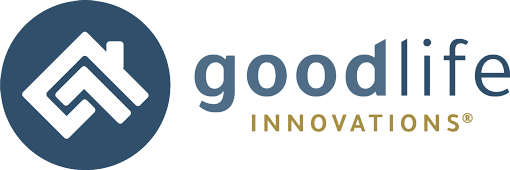This month we are calling this our Back to the Future episode and for good reason! Every now and then since the 1960’s, the vision for care has been cast and it’s a bit like a broken record. The story is always the same: people with different abilities want what we all want—a good life.
“…people with different abilities want what we all want—a good life.”
When we talk about what a good life looks like, we’ve got to admit that technology is absolutely integral to our lives. Especially since the pandemic, we rely more on technology than ever: for everything from locking your front door, to ordering your groceries, or connecting with a loved one who lives far away, there aren’t many moments across a day that aren’t made more powerful thanks to an app or a technological advancement. Imagine your life without technology for a moment. What would it look like and would that be your preferred version of a good life?
Other industries give us tremendous examples that help us imagine what technology makes possible and how to improve the delivery of goods and services.
But in the human service industry specifically, we have somehow let the delivery of care get in the way of leveraging technology. GoodLife’s stance is clear: those served should not have to choose between being served virtually or being served in person. You and I don’t ever have to make that choice. Our lives are integrated with technology and our human connections are improved and streamlined by technology. Withholding this from the lives of people with different abilities will only impede our ability to to make the vision of CMS’s final setting rules a reality.
“GoodLife’s stance is clear: those served should not have to choose between being served virtually or being served in person.”
So, the vision has been cast. For community service providers, this means figuring out how to deliver care in smaller and smaller settings, where we prioritize community access, self-determination, choice, privacy, and safety.
Now it’s time to talk about the plan for how we get from here to there. We encourage you to read more about our Neighborhood Network, Family Teaching, and Shared Living models that each deliver necessary resources to those we serve in unique and organic ways. At GoodLife, we use iLink Technologies to make the vision of the final settings rule a reality every day. The design of our service models and programs have been driven by fusing what we know we need to deliver (the vision) with what’s been made possible thanks to innovation and iLink.
“The result? More privacy, independence, access to the community, staff stability, and satisfaction.”
In the end, the goal is to deliver care at any moment as needs arise. Some of the needs we can anticipate, some happen here and there, unpredictably. But our staffing strategies combined with our smart home installations (which are backed with iLink Assist’s logic capabilities) are woven together in order for support to be an organic amenity to the neighborhood where our residents live. It’s an infrastructure that fuses human relationships and cutting-edge technology. The result? More privacy, independence, access to the community, staff stability, and satisfaction. The vision has been made reality, and it’s a good life.
________________________________
As providers of disability services across the nation lock on to what’s going to be required of them in CMS’s final settings rule, our team of consultants at GoodLife would love to support you through the process of integrating technology into your service models. If you’re interested in working with our specialized GoodLife U team to affordably and sustainably explore next-generation service models including those that utilize iLink, please reach out to us. We’d love to connect with you.

